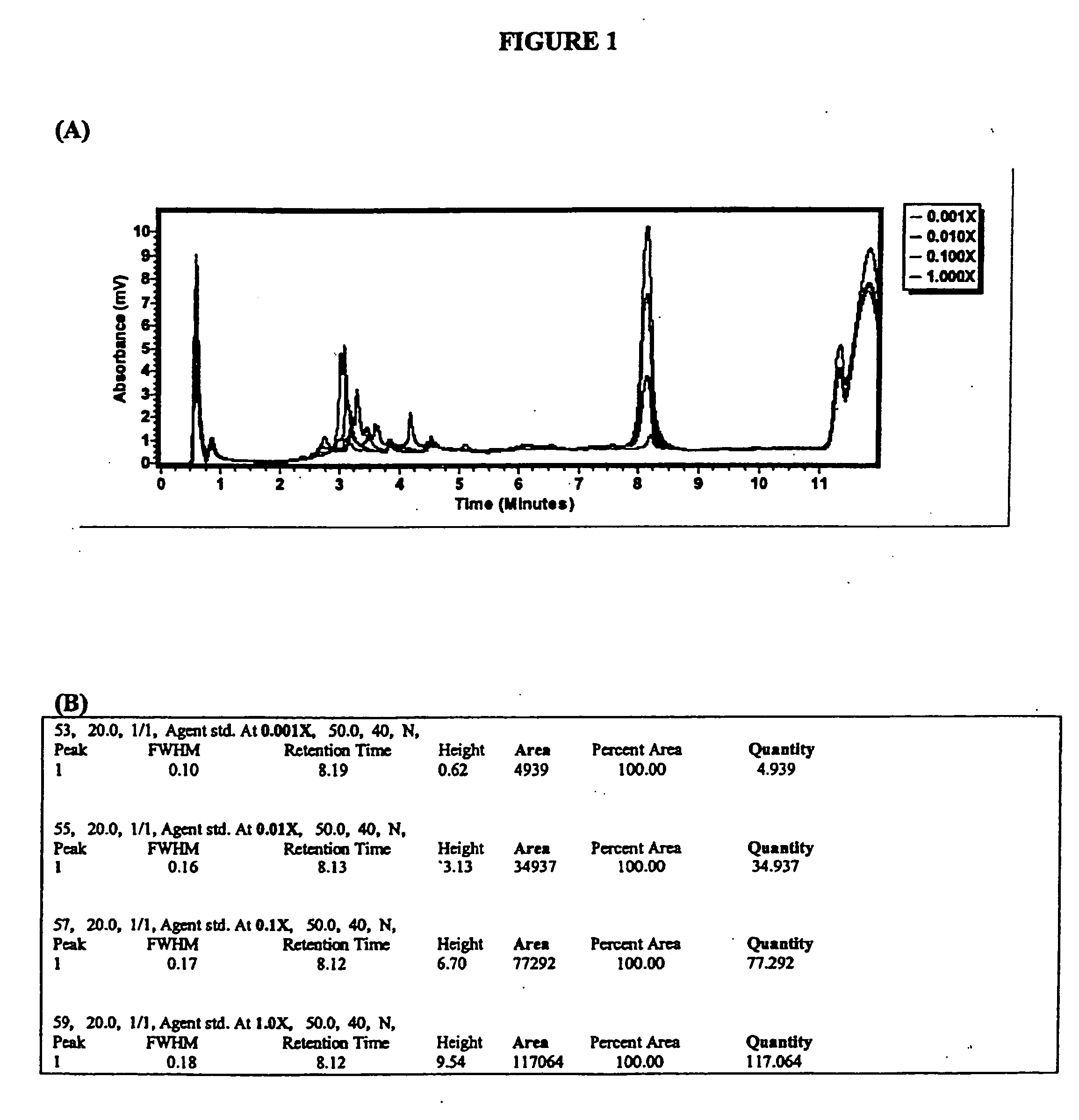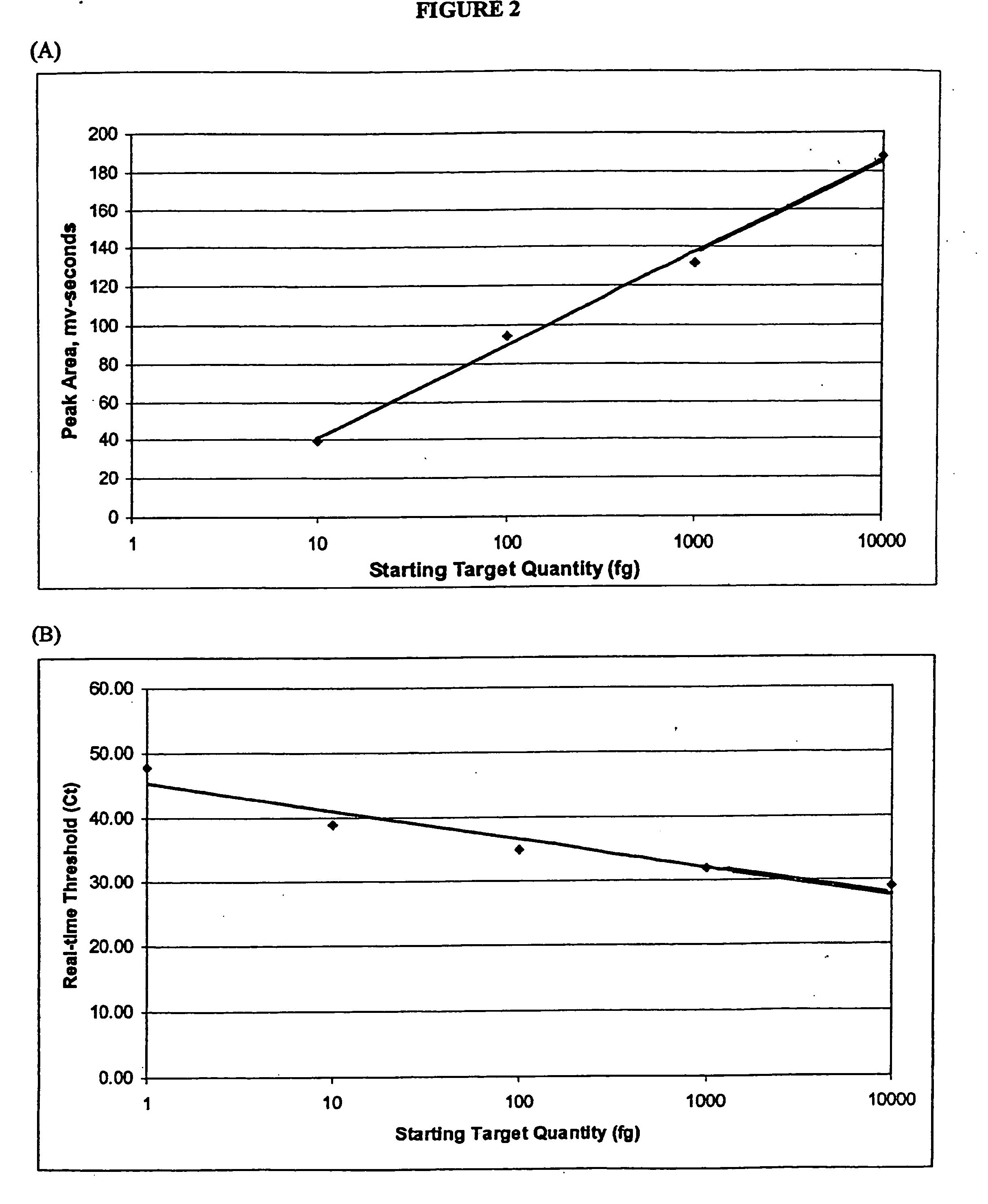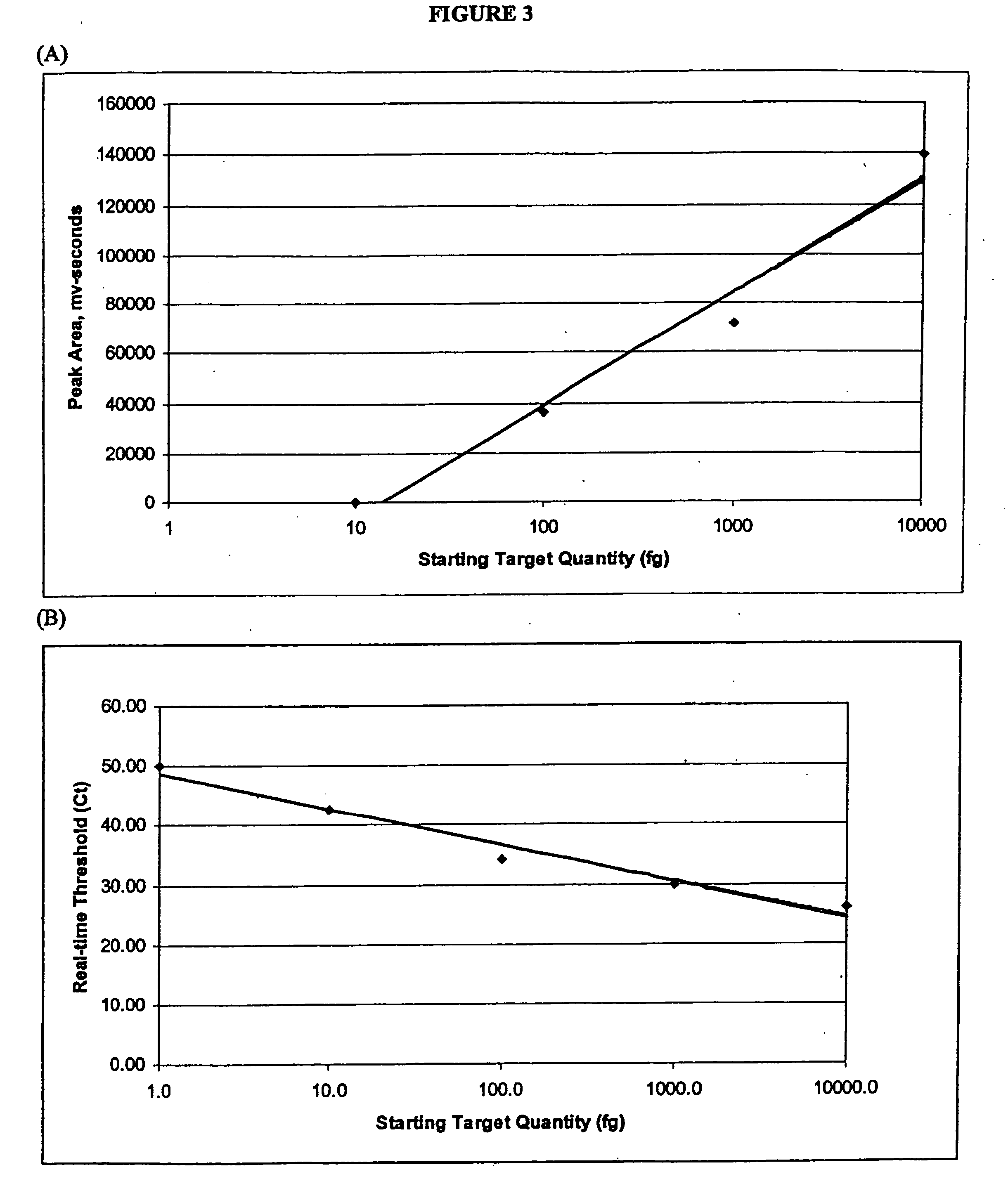[0033] One
advantage of the present invention is that it may be carried out using standard PCR amplification conditions. Amplification conditions that must be determined for any given PCR reaction include temperature and times for annealing, reaction and denaturing steps, as well as the choice of
thermostable enzymes and / or salt and buffering conditions. A wide variety of PCR amplification conditions are well-known to those of ordinary skill in the art. Different conditions may be used with the
present method depending on the target nucleic acid to be quantified. In some embodiments, PCR amplification conditions may include reverse transcription of single-stranded
RNA nucleic acids. PCR methods that include reverse transcription of
RNA are well-known in the art.
[0034] The primers may be selected according to any of the PCR primer selection methods well-known in the art. Primer selection is dependent on a number of factors, including
reaction temperature, sequences of the target annealing site, and overall complexity of the target (and non-target) sequence in the sample. In the multiplex PCR embodiment, different primers for the different targets should be selected for specific binding only to their intended targets under the particular multiplex PCR amplification conditions.
[0035] In some embodiments of the present invention, the primers are not labeled and the amplification products may be detected based on the standard method of detecting
UV absorbance near 260 nm. In alternative embodiments, however, the primer may be labeled. In one alternative embodiment, fluorescent labeling of the primers may be used to allow PCR
elution peak detection at lower concentrations. In some embodiments, fluorescent
label may be incorporated to allow detection of the PCR amplification products using quantitative hybridization techniques well-known in the art. Alternatively, radiolabeling of PCR primers may be used with the present invention, especially in applications where extremely high sensitivity is desired. TABLE 1CDC
List of Thread PathogensCategory ACategory BCategory CBacillus antracisBurkholderia pseudomalleiEmerging Infectious(anthrax)Diseases: Nipahvirus and additionalhantaviruses.
Clostridium botulinumCoxiella burnetti (Q fever)Tickbornehemorrhagicfever virusesYersinia pestisBrucella speciesCrimean-Congo(
brucellosis)hemorrhagic fevervirusVariola majorBurkholeria malleiTickbornes(
smallpox) and(glanders)
encephalitis virusesother pox virusesFrancisella tularensisRicin roxin (from RicinusYellow fever(tularemia)communis)Viral hemorrhagicEpsilon
toxin offevers:
Clostridium perfringensArenavirusesStaphylococcus enterotoxinLCM, Junin
virus,BMachup
virus,Typhus fever (RickettsiaGuanarito virusprowazekii)Lassa FeverFood and WaterborneBunyavirusesPathogens:HantavirusesBacteria:
Rift Valley FeverDiarrheagenic E. coliFlavirusesPathogenic VibriosDengueShigella speciesFilovirusesSalmonellaEbolaListeria monocytogenesMarburgCampylobacter jejuniVirusesCalcivirusesHepatitis AProtozoaToxoplasmaMicrosporidiaAdditional viralencephalides:West Nile VirusLaCrosseCalifornia encephalitisVEEEEEWEEJapanese
Encephalitis VirusKysanur Forest
Virus[0036] The quantitative PCR method of the present invention may be performed with existing medium through-put (MTS) or high-
throughput (HTS) analytical platforms well-known to those of skill in the art. For example, the present invention may be used with formatted reaction tubes, bar-coding, and decoder plates, permitting the cataloguing of analyzed samples for long-term storage. In addition to easy cataloguing of samples, MTS or HTS compatibility means that other elements of an analysis
stream can be optimized, automated or streamlined with little human manipulation. Any
chromatographic separation device amenable to quantitation of
DNA may be used with the method of the present invention. Many such devices are well-known to those of skill in the art, including reverse-phase
ion-
pairing HPLC, and micro-channel fluidic devices. For example, the Transgenomic WAVE RP-IP HPLC
system may be employed in the
present method. Using this
system, the method allows quantitative analysis across a
dynamic range of at least 5 orders of magnitude. Examples of compatible micro-channel fluidic devices include the Agilent Bioanalyzer 2100, or the Caliper AMS-90.
[0037] Alternatively, any analytical platform that allows quantitative analysis of DNA may be used in the method of the present invention to analyze the amount of end-point PCR amplification products. For example, microarrays or
microsphere flow-
cytometry (e.g. Luminex LabMap
System) have been used in assays to identify single-
nucleotide polymorphisms in multiplex fashion. The above analytical platforms may be used in instances in which primer design contraints result in putative amplification products that cannot be separated or identified by size.
[0038] Generally, the
present method achieves quantitative analysis of the initial target nucleic acids by calculating the integral of the area under the curves produced by the chromatographic analysis of PCR amplification products. As in real-time PCR, quantitation of unknowns requires the generation of a
standard curve using previously quantified starting material. By plotting the area(s) under the curve against the known starting copy number, the value of unknowns may be determined.
 Login to View More
Login to View More 


